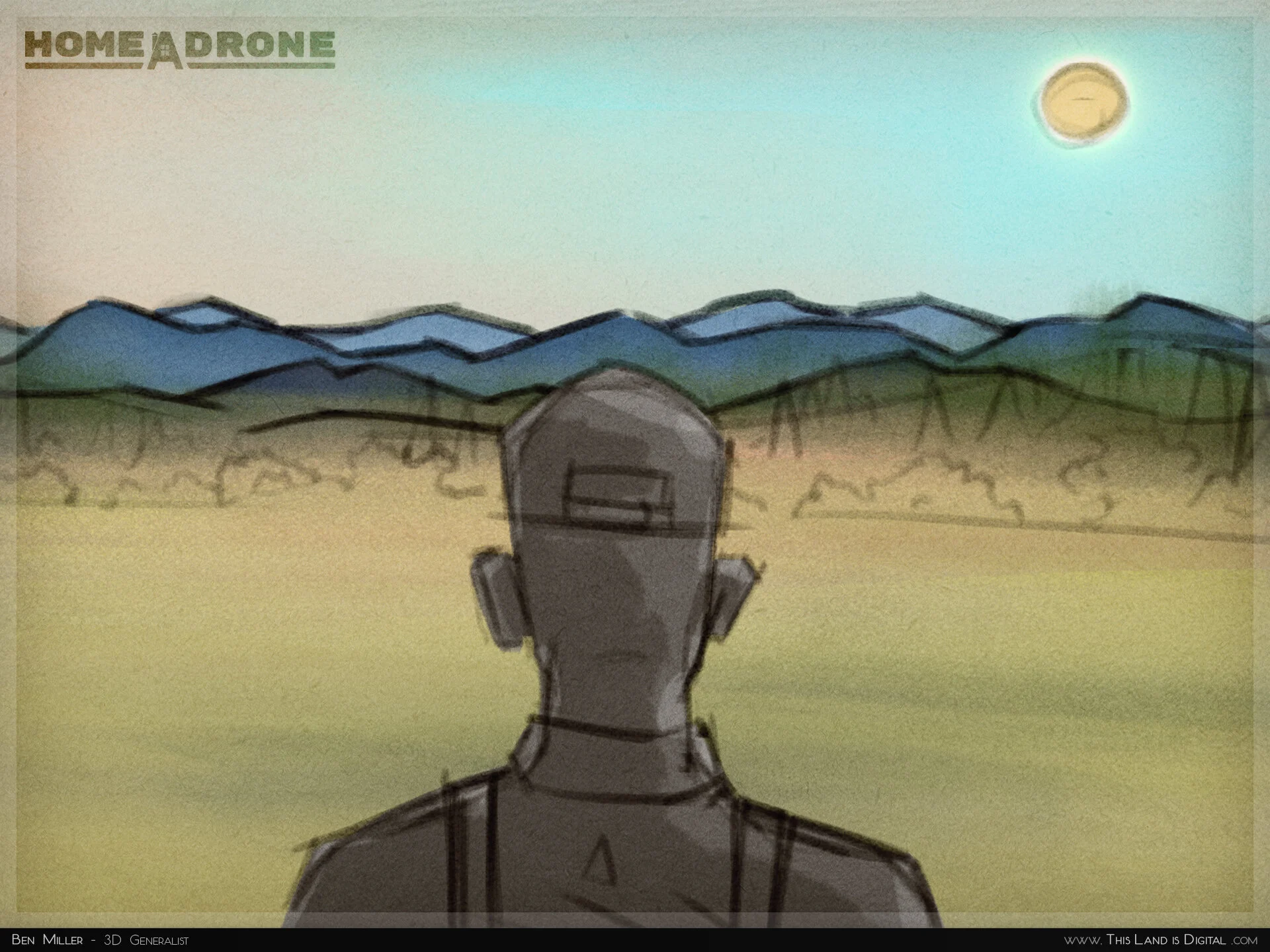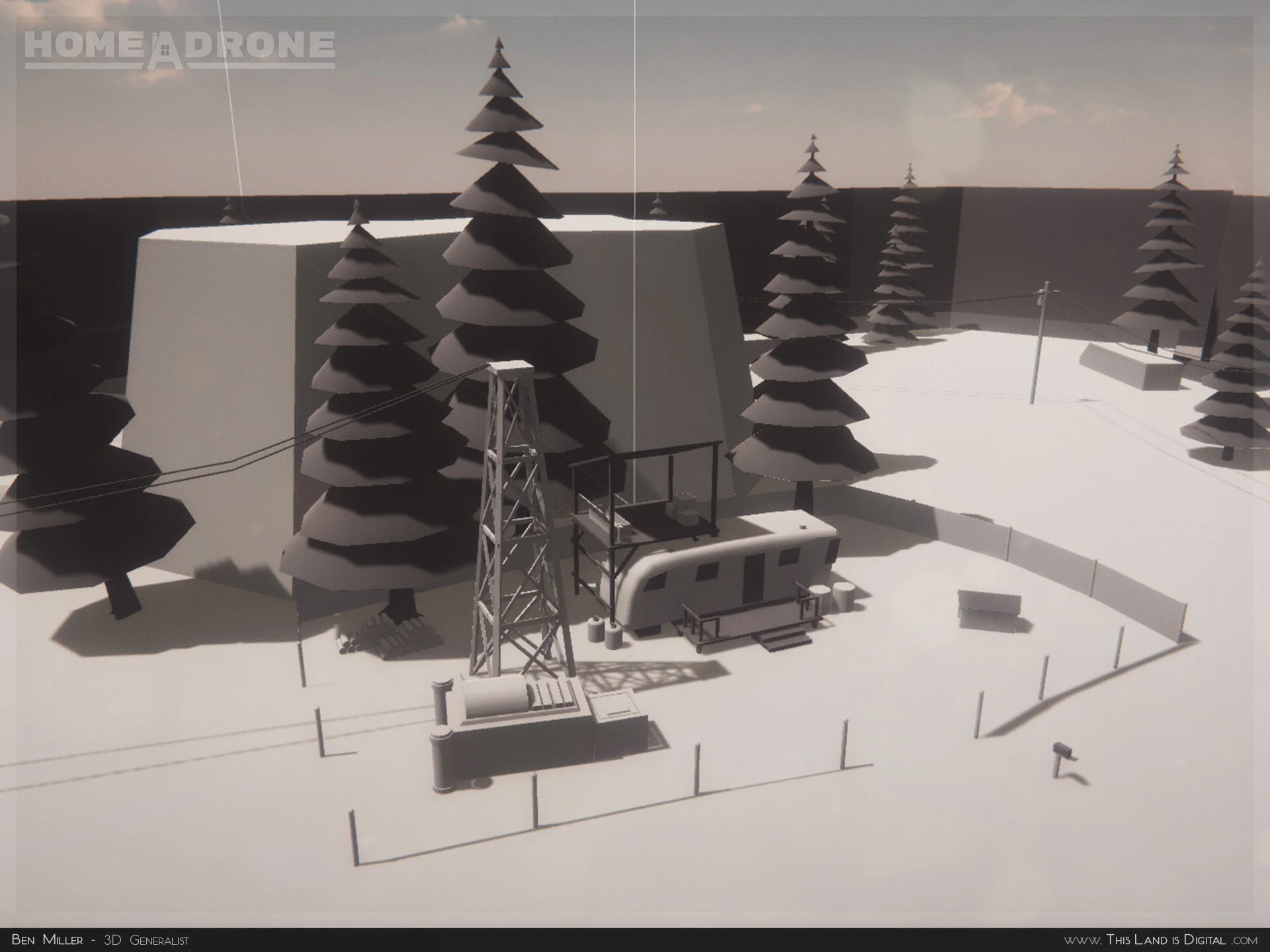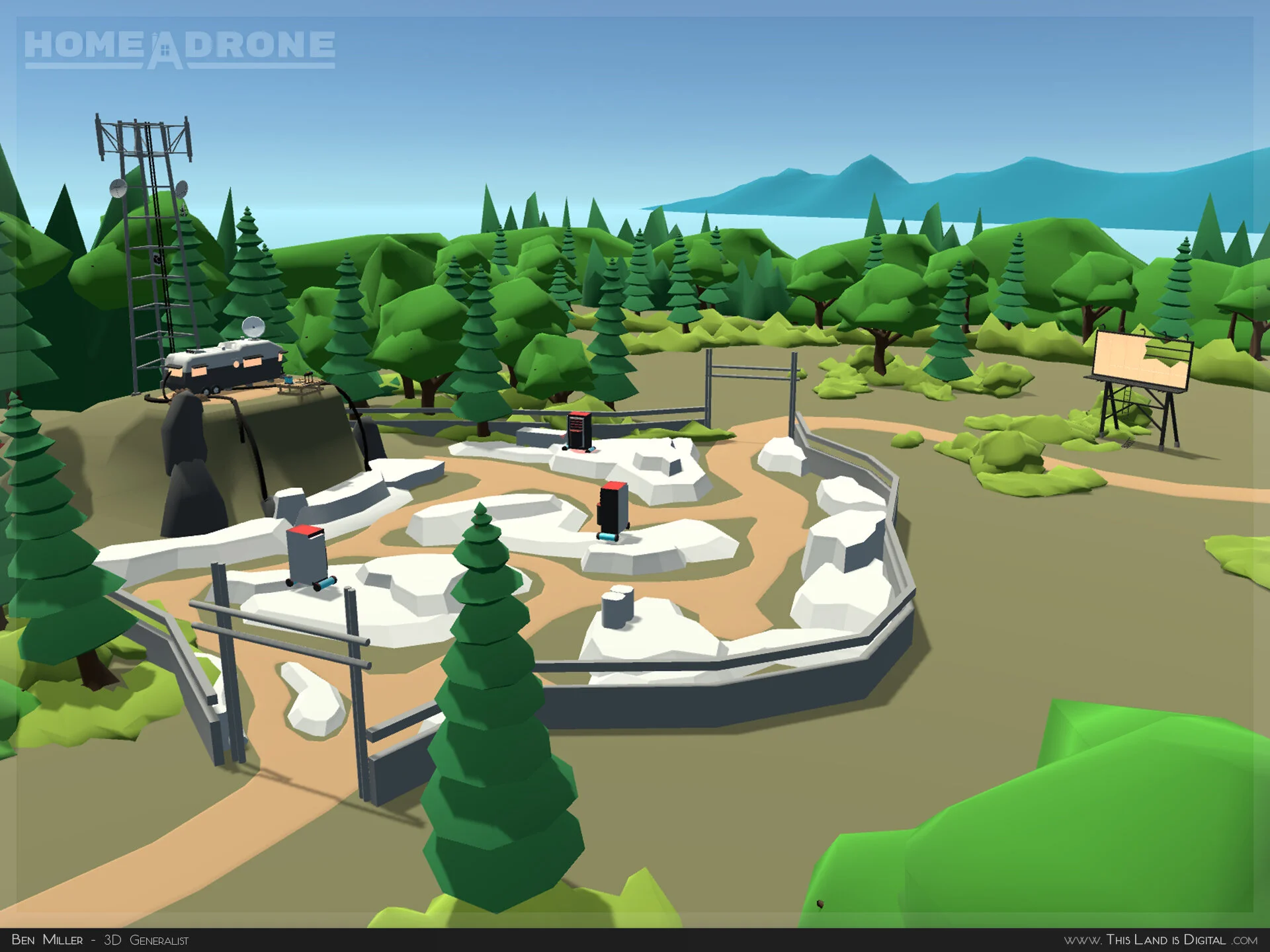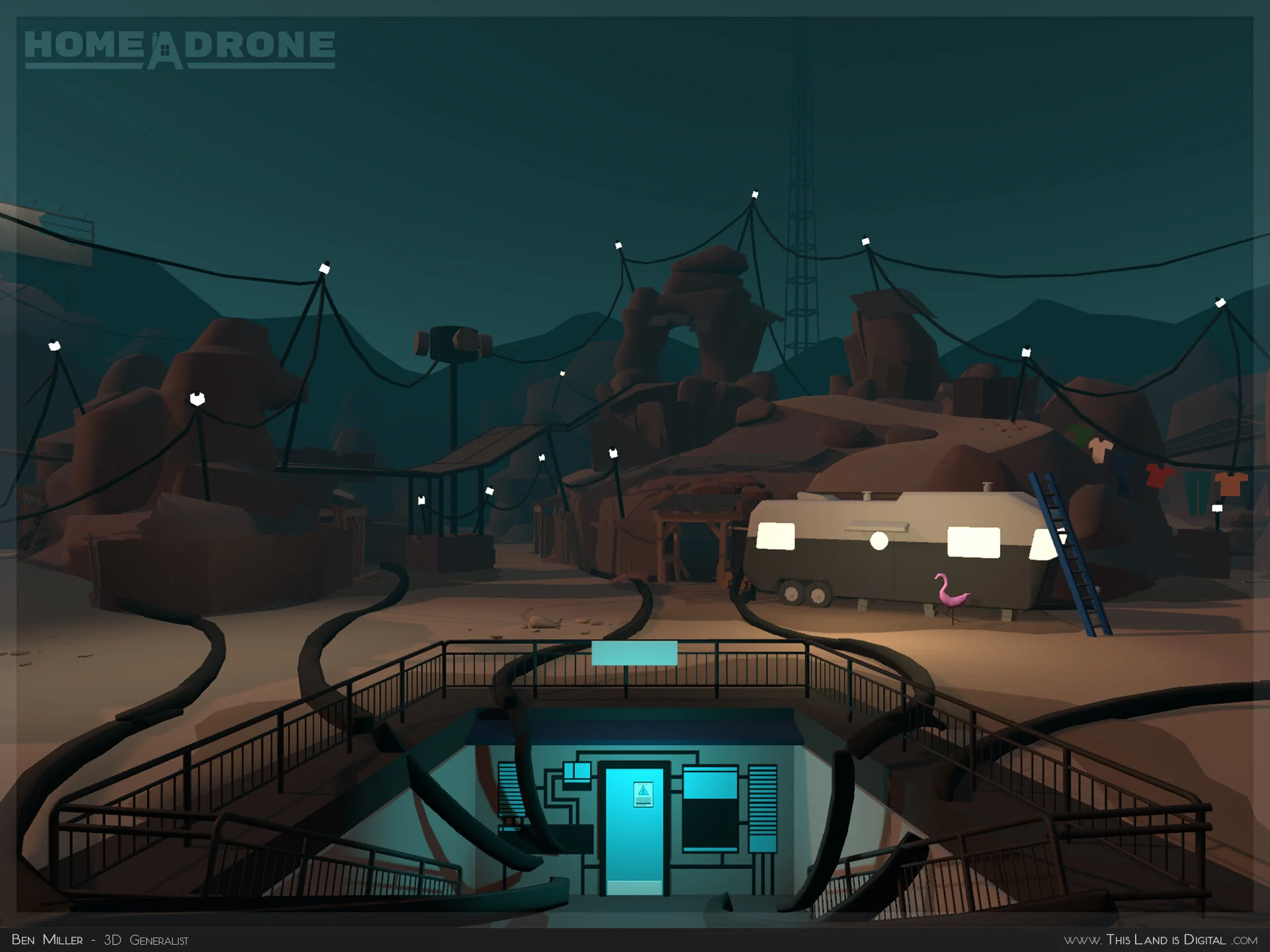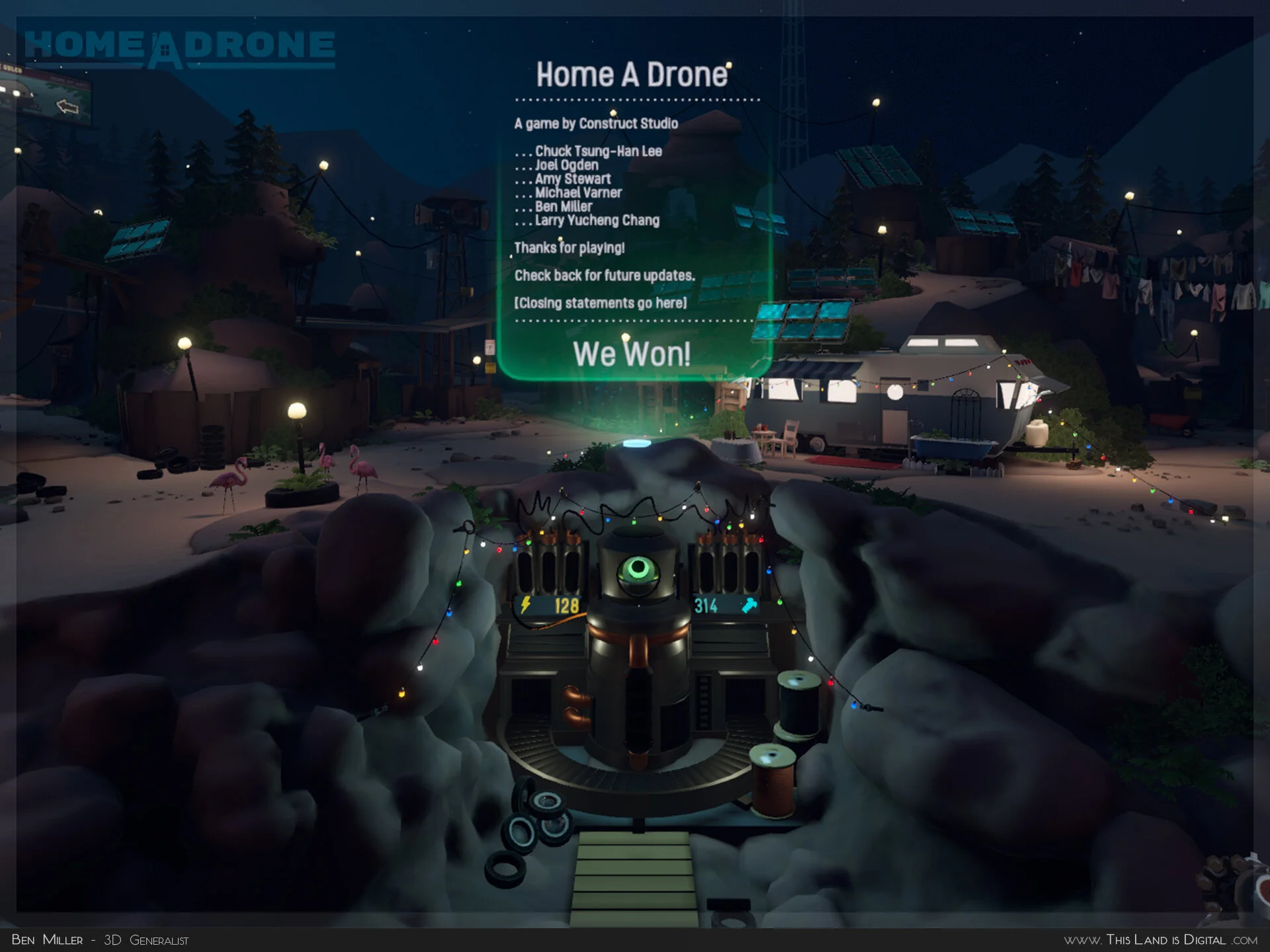Home A Drone - Environment Design (2019)
Unity, Maya, Quixel Suite, Photoshop, ZBrush, Marmoset Toolbag
I was assigned the task of designing and producing an environment for an Early Access prototype of Home A Drone. The project was originally intended to take just three months and, like others on our team, I was new to my particular role so I learned what I could even while racing to meet that deadline. Having started production of both art and gameplay simultaneously, my environment prototypes often preceded and informed the development of gameplay rather than reacting to it. These constraints are what ultimately drove me to focus my efforts on a single final environment.
Prototyping
Concept Art
We began the project with a very small window for producing concept art and determining a shared style. With both the narrative and gameplay largely undeveloped, we focused our efforts on what seemed like the most stable elements of the game or on assets we were currently working out.
Later sketches focused on how to quickly establish readable silhouettes for the foreground, midground, and background. With just one environment in the works, I made sure to give each pathway its own unique set dressings and approach to make the space worth staying in.
Prototype #1: The Trailer Park
Gameplay: None.
Major Changes: Among the first elements to be added were the trailer, shooting platform, the inner yard, and a backdrop of trees. These marked out the basic locations and boundaries of the game world. I used the approximate length (100m) of the parking lot outside our studio’s window as a reference for the length of the field. Feeling the space in a headset allowed me to determine how we might fill it.
Concerns: These early tests revealed that the composition of the scene from afar (as in the screenshot) does not always match how it appears when standing in it. In particular, the player could only see the bland roof of the trailer. Smaller assets were difficult to make out. If the player was too low, they couldn’t see past any obstacles in the environment, significantly shrinking the space.
Prototype #2: The Trailer on the Hill
Gameplay: Simple drones moved along waypoints to attack abstract machinery scattered through the yard. A series of archetypal weapons (shotgun, automatic, pistol, rifle, grenade launcher) were rushed in for testing.
Major Changes: The player was raised to see more of the yard. Paths now direct drones more organically and, later, tested tower defense elements. Various targets were tested for theme, arrangement, and clarity. Dividing the world into inner and outer zones. Entries into the inner yard were used to extend drone approaches. A hierarchy of plants was tested for filling out the backdrop.
Concerns: Gameplay was still emerging. Drones were still too far away from the player Larger targets would obscure the player’s view of drones attacking them, as would obstacles used to define the paths. The trailer, which served as both the defensive and the thematic center, was out of view behind the player.
Prototype #3: Red Rock Canyon
Gameplay: Several rounds of drones with diverse stats followed wandering or straight paths before crossing through the inner yard to attack a pair of targets. The player defends with weapons that unlock after successive rounds. Experimental turrets were introduced.
Major Changes: Embraced a more obscuring environment with canyon-like channels radiating in all directions. Maintained a central channel with high-visibility and shortest path. Simulated a wandering behavior for the drones using NavMesh manipulation. Moved the trailer into view without blocking the level. Blue mountain backdrops.
Concerns: Targets were now barely in view. Narrative wasn’t developing. Changing the environment style set back design efforts. Drones took too long to get to the inner yard from where they entered. The as-yet unclaimed role of gameplay designer was consuming too much of my time.
Prototype #4: The Scrapyard
Gameplay: Drones wander in and out of view while waiting to attack a bunker-like structure.
Major Changes: Game design was handed off to another team member. Wandering behavior is incorporated into the drones’ designs. The target is lowered to both be out of view and force drones to circle around in front of the player. The level’s design is informed by sketches, breakdowns, and existing gameplay. Switched to night time. Tunnels help drones navigate quickly into the inner yard.
Concerns: The allotted three months were up. All structures were in place for a functional prototype, yet the set was not dressed, numerous shortcuts were taken to get there, and the narrative was absent.
Final Environment: Henry’s Scrapyard
Gameplay: Defined weapons, traps, and towers are purchased through an interface using Scrap earned from destroying drones. Combat and build phases are introduced. Defenses are purchased with Power which regenerates over time.
Major Changes: The main character, Scrappy, is created. A quarry replaces and expands the generic bunker. Terrain is finished. Plants and particles fill out the space. Many assets are finished. An elevator shaft allows for a shooting platform and a basement workshop. Colors are balanced. Lights are baked. Performance becomes my main goal.
